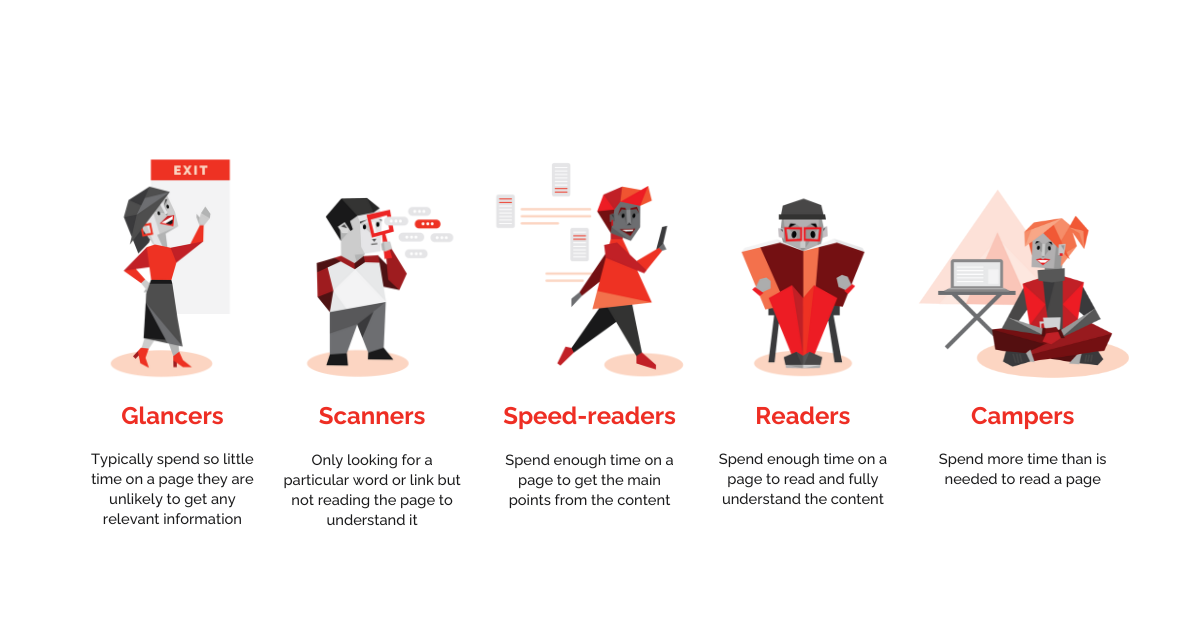Myth busting intranet statistics with SWOOP Analytics
Does the time spent editing an intranet page influence the page “visitor” data?
We’ve been busting myths to help you better understand your intranet statistics! The latest myth busted relates to the time people spend editing intranet pages, and whether that time spent editing pages influences the average read time for each page.
The short answer is; “no”.
After conducting a MythBusters-style analysis, we found the time spent editing an intranet page or intranet news article has minimal to no impact on the data showing the overall time end users spend visiting each page or article.
We looked at the average SWOOP Visitor Persona scores across five sample organisations and then compared the data, including editors and excluding editors.
Why is this important? Intranet managers are constantly seeking ways to understand the effectiveness of their communications on SharePoint intranets. Among the metrics they focus on, typical visit time/average visit times are often a primary focus. At SWOOP Analytics, we are often asked by intranet managers if the time spent editing an intranet page influences the overall average read time for intranet pages.
This prompted us to undertake our MythBusters investigation, with the finding that the time spent editing an intranet page or intranet news article has little impact on the data showing the overall time end users spend on each page or article.
Let us explain further. SWOOP Analytics for SharePoint intranet looks at the time visitors spend on an intranet page or news article to determine a likely persona to describe the type of behaviour you might see. The five SWOOP Analytics for SharePoint intranet personas are:
· Glancers - typically spend so little time on a page they are unlikely to get any relevant information from the page.
· Scanners - spend enough time on a page to look for a particular word or link but are not reading the page to understand it, but to find a particular thing.
· Speed-readers - spend enough time on a page to get the main points from the content.
· Readers - spend enough time on a page to read and fully understand the content.
· Campers - spend more time than is needed to read a page.
Intranet managers have an understandable interest in ensuring the accuracy of their analytics. When there is an over-representation of the Camper persona, for example, the immediate assumption is that the amount of time editors spend reviewing, editing and updating content make the typical visit times appear inflated. This uncertainty can also lead intranet managers to question the reliability of the data available to them.
SWOOP Analytics’ methodology for measuring intranet effectiveness is based on ensuring intranets are useful, usable and used. This is why SWOOP accounts for all user behaviours, including those of editors, ensuring our data remains consistent and reliable, even when factoring in editing activities.
Tracking analytics in SharePoint is imperative for understanding user behaviour and improving intranet performance for end users. With SWOOP Analytics for SharePoint intranet, intranet managers gain access to a wealth of insights tailored to every piece of content, which is also aggregated at the site, audience and overall intranet level. SWOOP Analytics equips intranet managers with the tools needed to measure, analyse, and optimise their intranet effectively. This then empowers intranet managers to make informed decisions that drive tangible results.
Interested in seeing how your SharePoint intranet stacks up? Run a free trial of SWOOP Analytics for SharePoint intranet by getting in touch with your regional SWOOP representative.
Americas: Gemma Saint – gemma.saint@swoopanalytics.com
EMEA: Pete Johns – pete.johns@swoopanalytics.com
APAC: Emily O’Brien – emily.obrien@swoopanalytics.com




